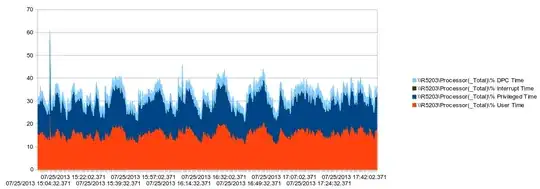I have an Windows 2003 (don't laugh) server with 10GbE connectivity processing data coming to it over the network and sending it back out.
Here's the graph of overall system performance and the particular application being examined:


The second graph is zoomed into the momentary spike and is relevant to the data in my answer.
How should I interpret the high percentage of kernel time on these processes? Overall, they're doing a lot of network I/O (66K PPS in, 96K PPS out) and I'm wondering if the correct interpretation is that the time spent in privileged space is copying the data back and forth between buffers and application memory. Would that make sense?